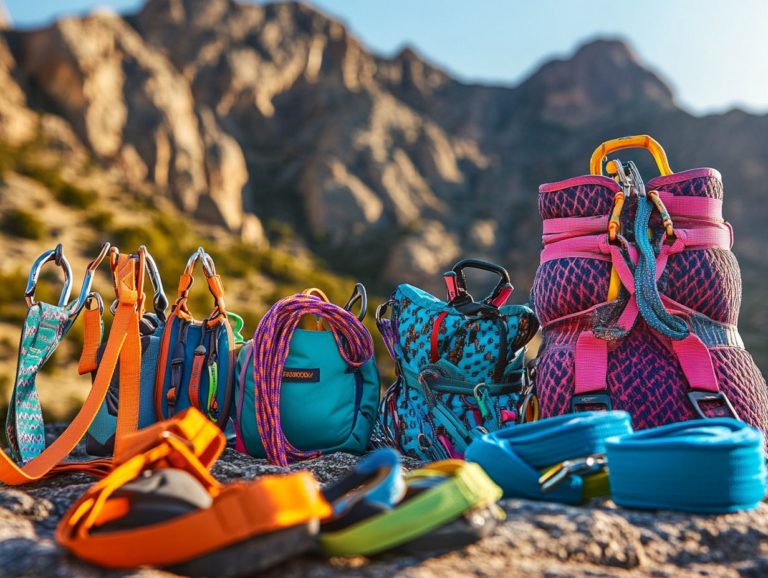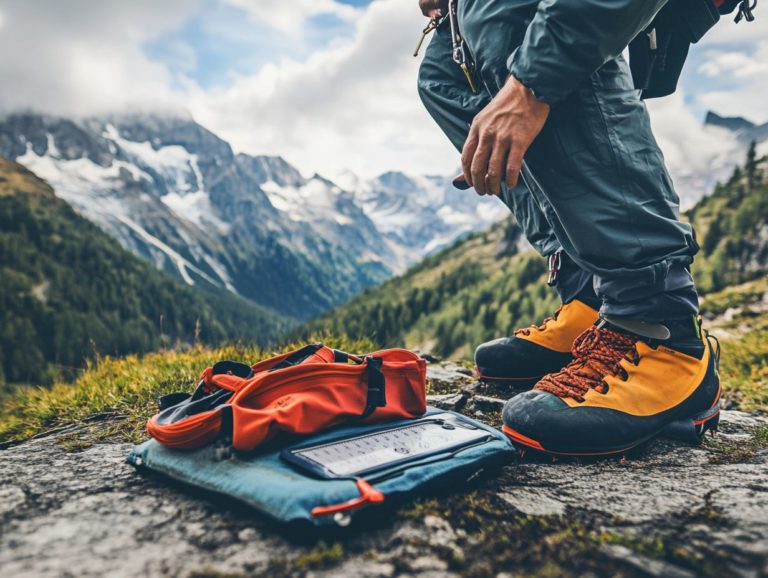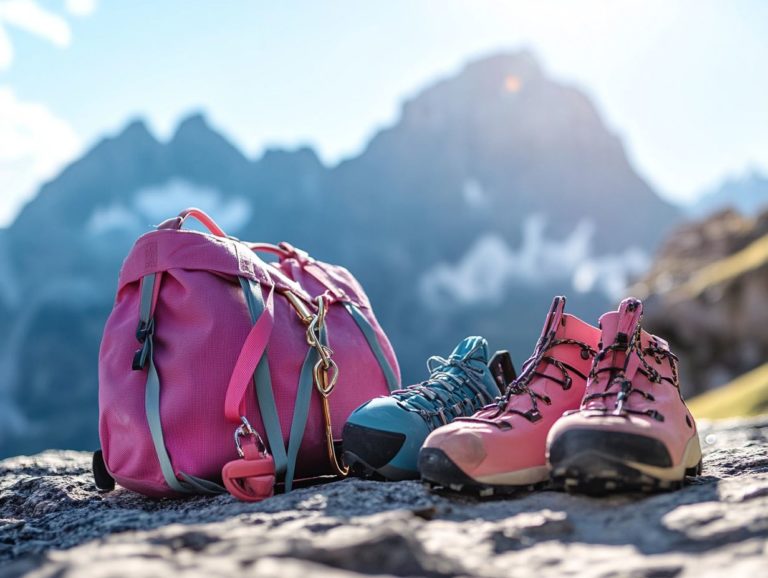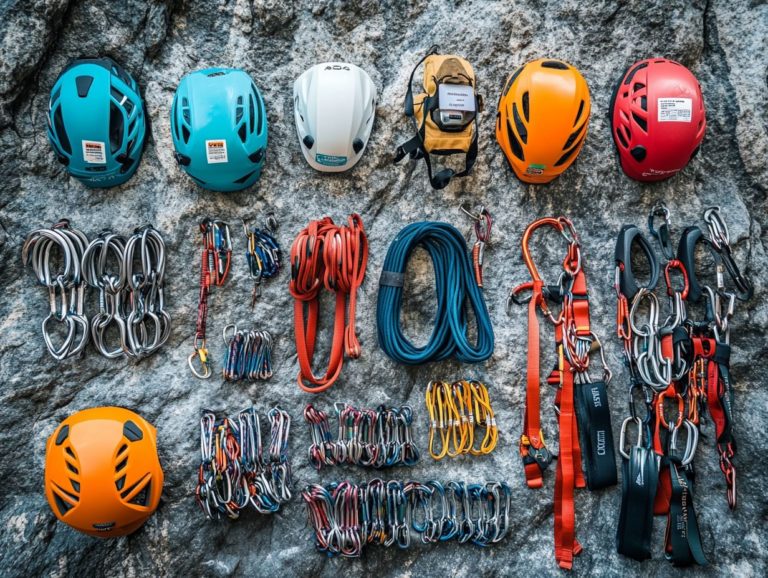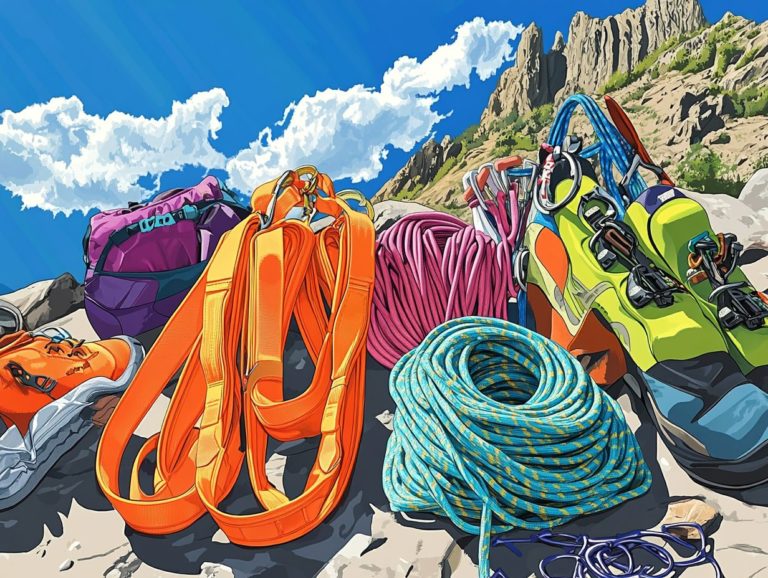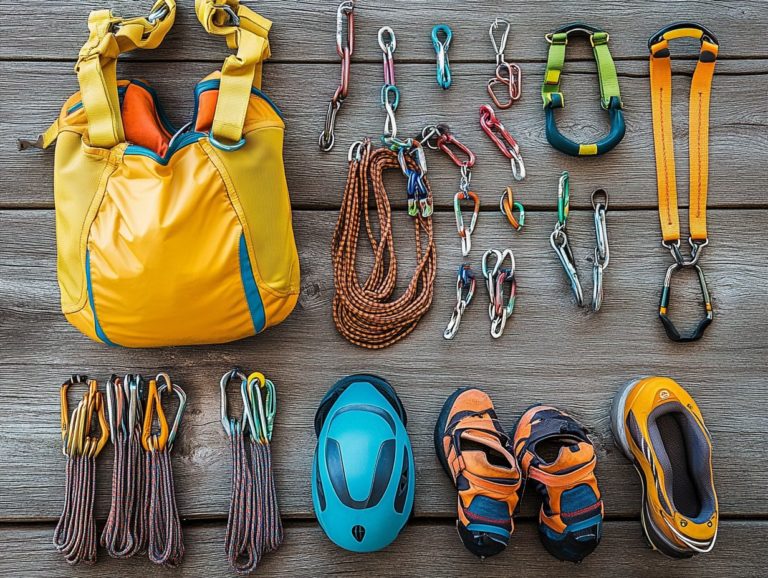How to Avoid Common Climbing Gear Mistakes
When it comes to climbing, having the right gear can be the defining factor between a safe adventure and a perilous misstep.
Understanding how to choose, use, and maintain your equipment is essential, whether you’re just starting out or have years of experience under your harness.
This article delves into the common mistakes climbers make with their gear and provides valuable tips on selecting the best equipment for various types of climbing. It also highlights the importance of proper maintenance techniques.
Arm yourself with knowledge to ensure that every climb is not only safe but also an enjoyable experience!
Contents
- Key Takeaways:
- Understanding the Importance of Quality Gear
- Common Mistakes to Avoid
- Choosing the Right Gear
- Tips for Properly Using and Maintaining Gear
- Frequently Asked Questions
- What are some common mistakes to avoid when using climbing gear?
- How often should I check my climbing gear for wear and tear?
- Can I use my climbing gear after it has been exposed to extreme weather conditions?
- What should I do if I notice my climbing gear is damaged?
- Is it important to properly store climbing gear?
- Can I use any type of rope for climbing?
Key Takeaways:
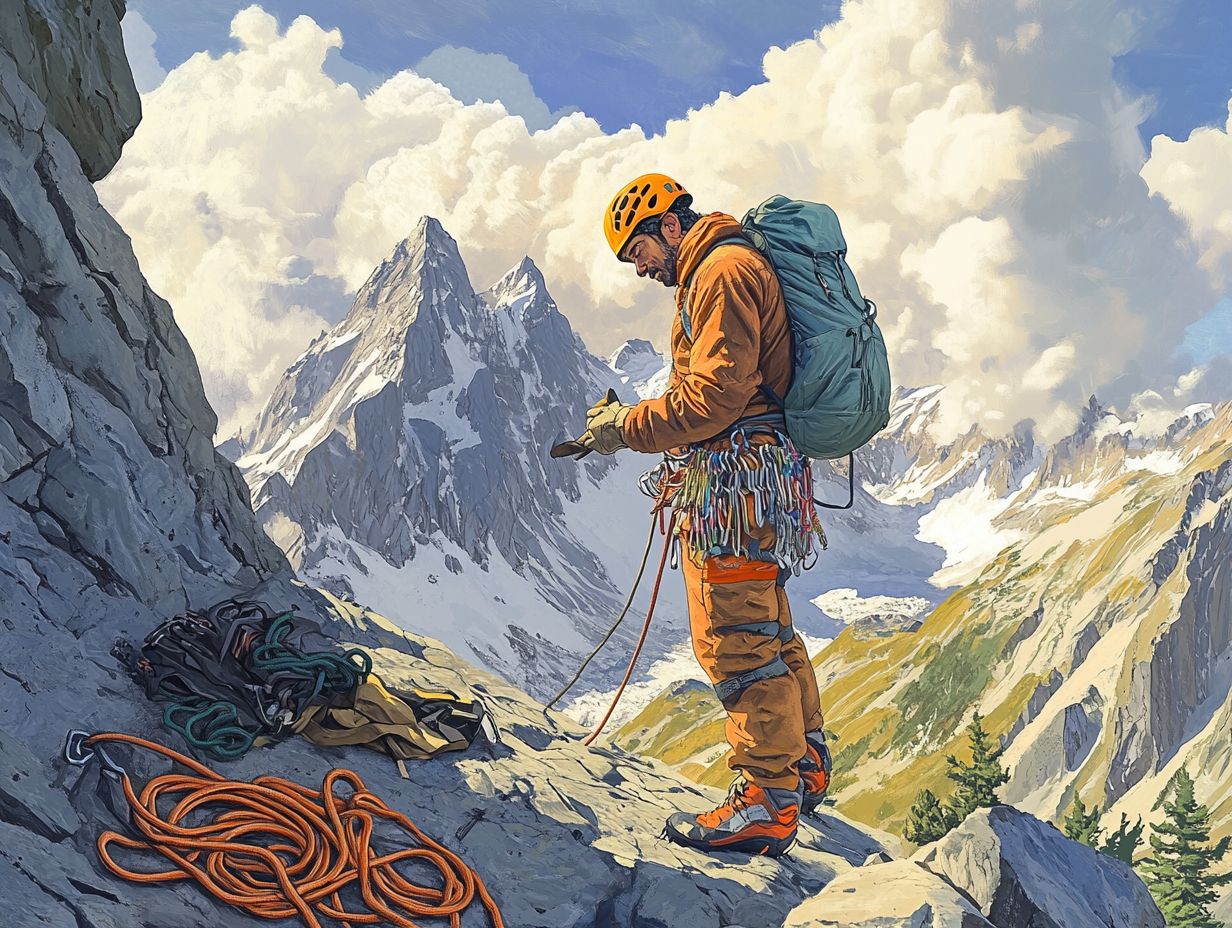
- Choose top-notch gear for a safer and more enjoyable climb!
- Regularly maintain your gear to avoid accidents and increase its lifespan!
- Consider your climbing style and preferences when selecting gear! Stay informed and prepared to use and care for your equipment.
Understanding the Importance of Quality Gear
Grasping the significance of quality gear in climbing is essential for ensuring your safety and preventing mishaps on your ascent. Choosing high-quality climbing gear is essential! A good safety device can greatly enhance your overall climbing experience.
Quality gear enhances not just your safety but also your performance and confidence, whether you re scaling walls indoors or tackling the great outdoors. Always choose reliable gear! Good practices will help you climb safely.
Common Mistakes to Avoid
When you’re out climbing, whether at iconic spots like Joshua Tree or El Capitan, it s crucial to be mindful of common mistakes that can hinder your safety and overall experience.
Belay errors can result in serious incidents, highlighting the importance of effective communication with your climbing partner. Recognizing and addressing these climbing missteps allows you to follow essential safety protocols, ultimately minimizing risks and fully enjoying your adventures in the vertical world. Additionally, knowing how to organize your climbing gear can enhance your safety and efficiency.
Using Gear Incorrectly
Using gear incorrectly is a common pitfall for climbers, leading to serious safety concerns and climbing accidents. Misjudging how to secure harnesses, failing to double-check knots, or using unsuitable carabiners may seem minor, but these mistakes can significantly increase your chances of falls and injuries.
Improper belaying like not maintaining adequate tension or failing to communicate effectively can create perilous situations. To ensure your safety, always practice effective belaying techniques! Keep a firm grip on the brake side of the rope and use clear verbal cues to enhance communication.
Regularly assess your equipment, adhere to manufacturer guidelines, and participate in ascending and descending drills. Staying sharp and safe on the rock is paramount.
Not Properly Maintaining Gear
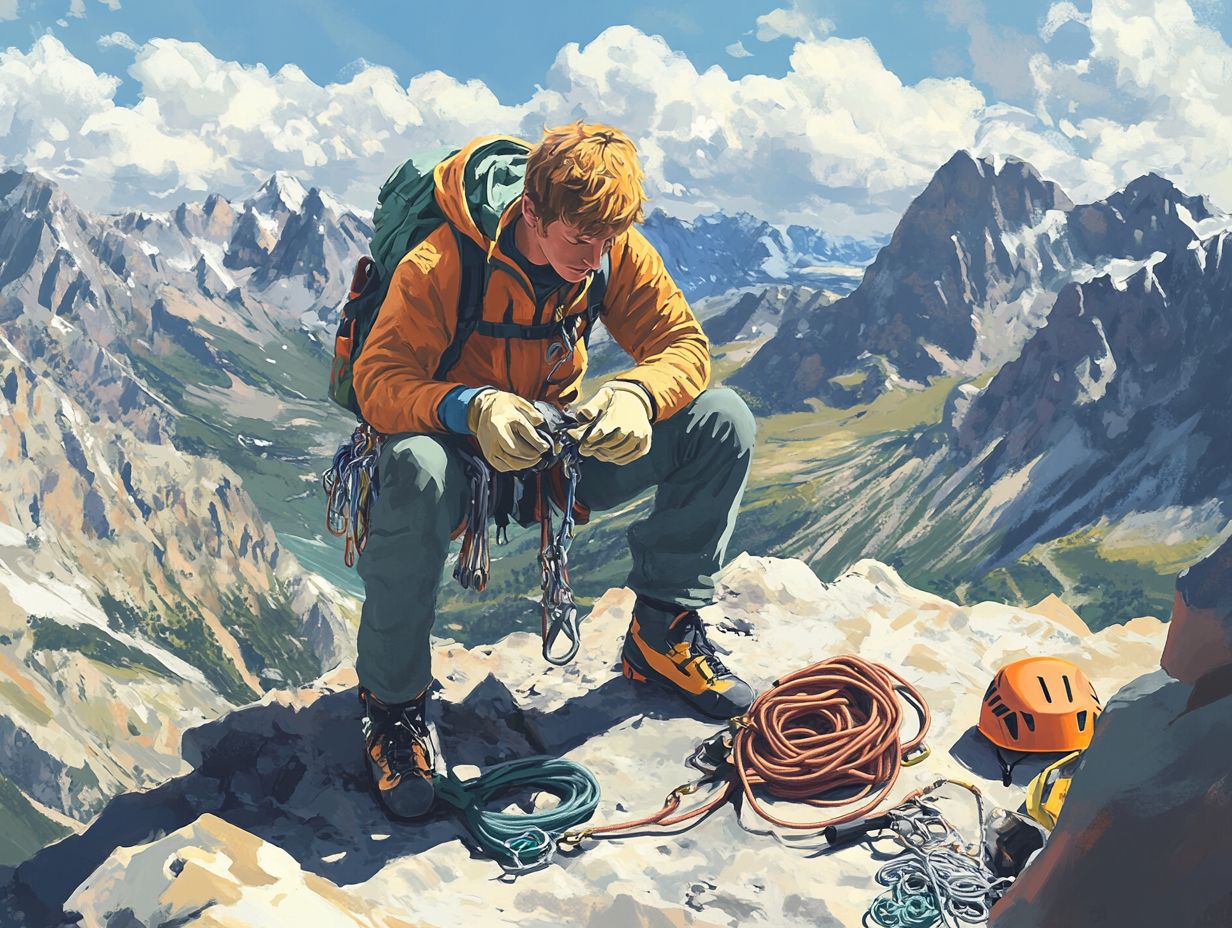
Neglecting to maintain your climbing gear properly can jeopardize your safety and lead to mishaps on the rock face. This essential aspect of climbing cannot be overstated; the quality and reliability of your equipment directly influence your ability to navigate challenging terrains with confidence.
Regular inspections, thorough cleaning, and timely replacements are vital practices for anyone serious about the sport. Developing effective habits like checking your gear before each ascent and ensuring proper storage will help guarantee that everything performs at its best!
To aid you in this endeavor, consider creating a climbing checklist. This checklist should encompass key items like:
- Inspecting harnesses
- Ropes
- Carabiners
- Helmets for any signs of wear and tear
Making sure all components are in peak condition before you embark on any climb is the smart move you won’t regret!
Choosing the Right Gear
Picking the right gear is super important for climbers who want to refine their techniques and prioritize safety. Whether you re scaling the picturesque peaks of Vail, tackling the urban cliffs of Los Angeles, or navigating the rugged terrains of Colorado, having the right equipment can make all the difference.
Each climbing environment, whether indoors or outdoors, presents its own challenges and risks. Thoughtful consideration of specific equipment is essential. By evaluating the nature of your climb and your personal skill level, you can make informed decisions based on expert climbing advice and insights from seasoned climbers.
Factors to Consider
When selecting climbing gear, several critical factors must be considered to ensure both safety and effectiveness during your ascents.
First, pay attention to the weight of your equipment. Heavier gear can lead to unnecessary fatigue on longer climbs. Durability is also essential. Opting for materials that can withstand the harsh realities of outdoor environments will save you both time and money in the long run.
Different climbing scenarios, like sport versus traditional climbing where you place your own gear, require specific types of gear. Understanding various climbing techniques can significantly aid in selecting the most suitable equipment. Additionally, consulting resources on the top climbing gear for rock climbers and seeking advice from the climbing community can provide invaluable insights to guide your decisions.
Recommended Gear for Different Types of Climbing
The right gear varies significantly depending on the type of climbing you re tackling, whether it s indoor climbing, outdoor climbing, or even bouldering.
If you’re hitting the indoor walls, comfort and sensitivity should be your priorities. A snug-fitting pair of climbing shoes is essential; many seasoned climbers rave about specific models that enhance their ability to feel the holds beneath their feet.
When you venture outdoors, your gear requirements shift dramatically. You’ll want a more robust set of equipment, including durable harnesses that can endure unpredictable conditions and reliable belay devices to ensure safety during your ascents. Additionally, it’s important to be aware of common misconceptions; check out the top 10 climbing gear myths debunked for valuable insights.
For bouldering enthusiasts, focus on shoes that deliver exceptional grip and agility, perfect for short, powerful climbs. By sharing their experiences, climbers often highlight the importance of climbing gear inspection and choosing the right gear that aligns with the climbing environment and resonates with individual preferences and styles.
Tips for Properly Using and Maintaining Gear
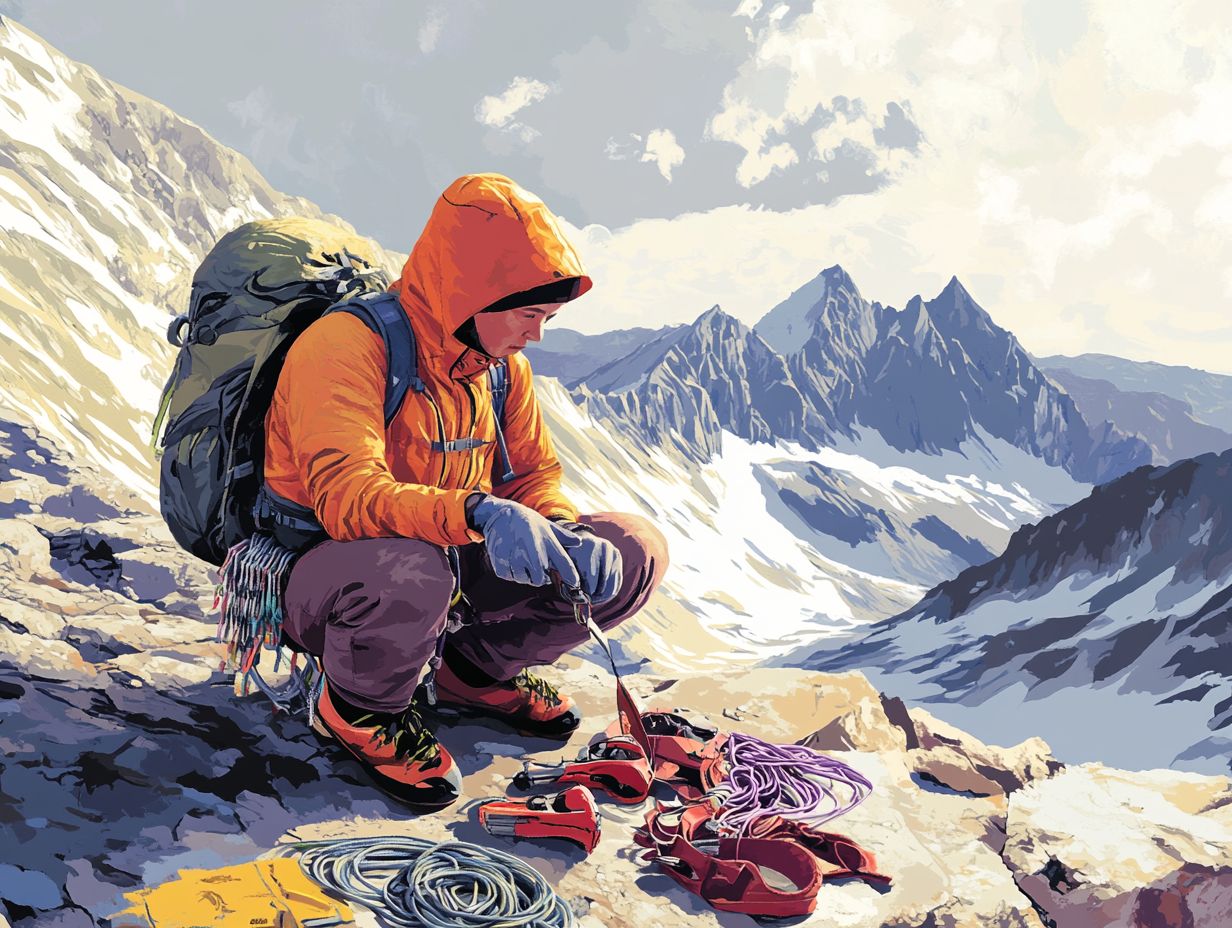
Properly using and maintaining your climbing gear is essential for ensuring safety and elevating your overall climbing experience. This attention to detail gives you the confidence necessary to tackle your next challenge.
By understanding effective climbing techniques and incorporating belaying tips into your practice, you can prevent errors and make sure your climbing partners feel secure. Don’t neglect regular maintenance of your climbing equipment; refer to how to maintain your climbing gear, as it’s vital for minimizing risks and fostering a community of mindful climbers dedicated to safety protocols.
Proper Techniques and Care
Utilizing proper techniques and caring for your climbing gear not only enhances your safety but also extends the lifespan of your equipment.
It’s crucial to understand that each piece of gear, from harnesses to carabiners, comes with specific handling and maintenance requirements. Many climbing communities stress the importance of inspecting your gear before every climb, looking for signs of wear or damage. For those preparing for an adventure, knowing how to pack your climbing gear efficiently can truly be lifesavers in critical moments.
Seasoned climbers often share stories where overlooking such inspections led to near-misses, reinforcing just how vital these practices are. Storing your gear properly, away from direct sunlight and moisture, can significantly boost its durability. Talking with other climbers about gear can really boost your knowledge and safety.
Conclusion
Gear up, stay safe, and hit the climbing walls with confidence!
Importance of Being Informed and Prepared
Being informed and prepared is vital for you in reducing climbing risks and enhancing safety among fellow climbers.
Continuously updating your knowledge about climbing protocols, safety tips, and potential hazards is essential for anyone in the climbing community.
Engaging with discussions and forums can provide you with invaluable insights. Participating in these conversations not only helps you refine your skills but also cultivates a stronger sense of community.
By taking part in these platforms, you can share experiences, ask questions, and stay attuned to the latest practices, ensuring a safer and more enjoyable climbing experience for everyone involved.
Frequently Asked Questions
What are some common mistakes to avoid when using climbing gear?
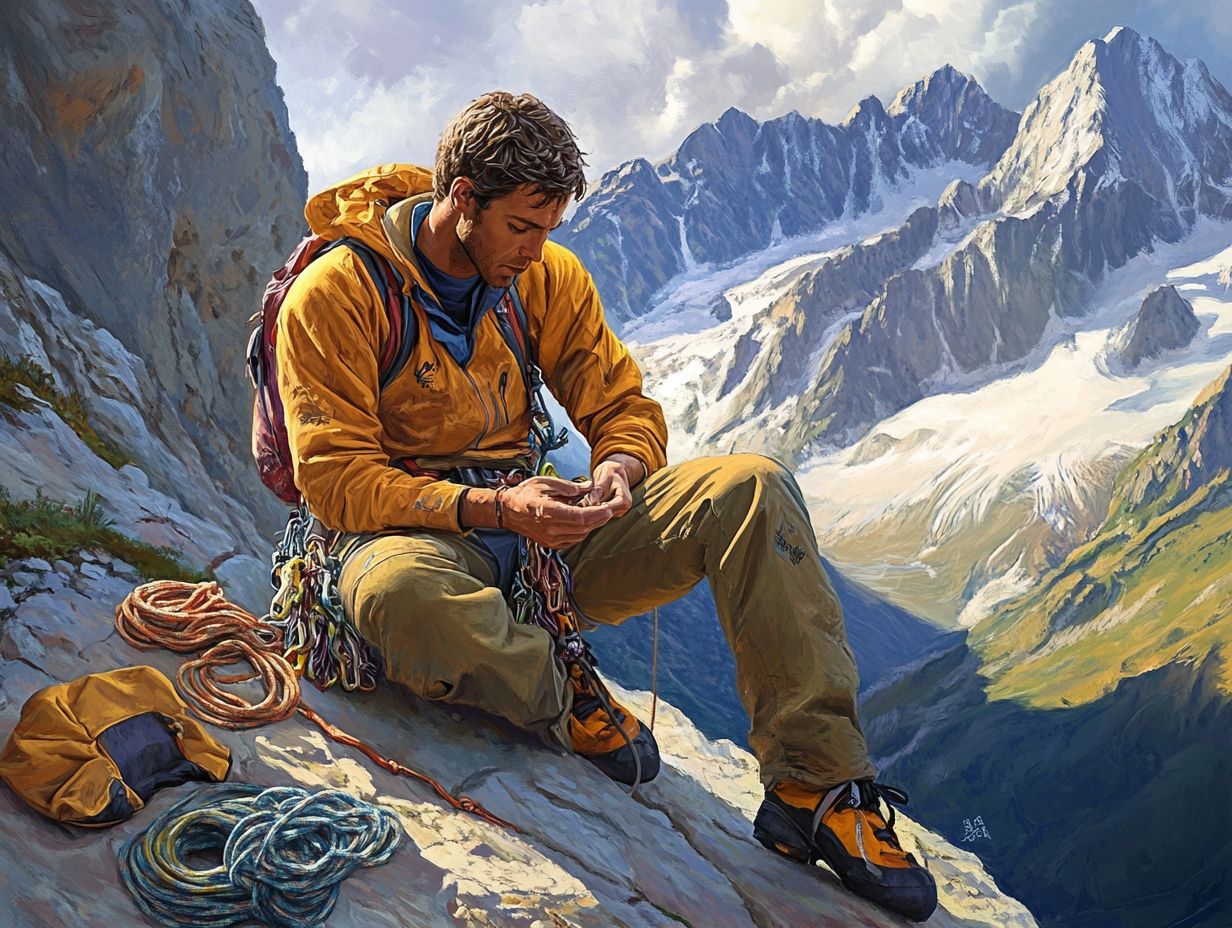
Some common mistakes to avoid include not properly inspecting gear before use, using gear beyond its recommended lifespan, and being aware of mistakes made while securing a climbing partner. These factors can significantly enhance climbing safety.
How often should I check my climbing gear for wear and tear?
Always check your climbing gear before each use to ensure your safety! It s also good practice to perform a thorough inspection at least once a year. This will help catch any potential issues before they become major safety hazards.
Consider using a climbing checklist to streamline this process.
Can I use my climbing gear after it has been exposed to extreme weather conditions?
No, it is not recommended to use climbing gear that has been exposed to extreme temperatures, moisture, or other harsh conditions. These factors can weaken the gear and compromise its safety.
Climbing incidents can often be traced back to such mistakes.
What should I do if I notice my climbing gear is damaged?
If you notice any damage to your climbing gear, never risk your safety by using damaged gear replace it immediately! Always communicate with your climbing partners about any equipment issues.
Is it important to properly store climbing gear?
Yes, proper storage of climbing gear is crucial to its longevity and safety. Make sure to keep gear in a dry, cool place and away from direct sunlight, chemicals, and sharp objects.
Implementing good climbing practices will ensure your gear remains in top condition.
Can I use any type of rope for climbing?
No, it is important to use ropes specifically designed for climbing. These ropes are designed to withstand the weight and movements of a climber and are essential for safety while climbing.
Always choose the best fall protection gear for your safety your life depends on it!

